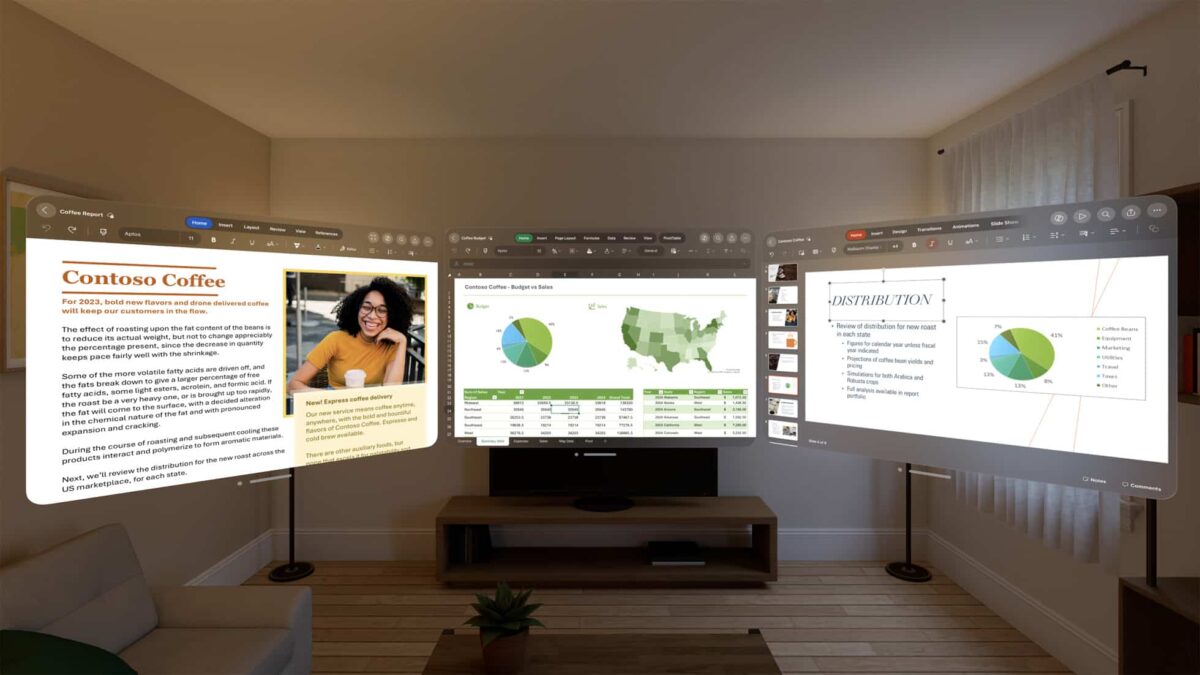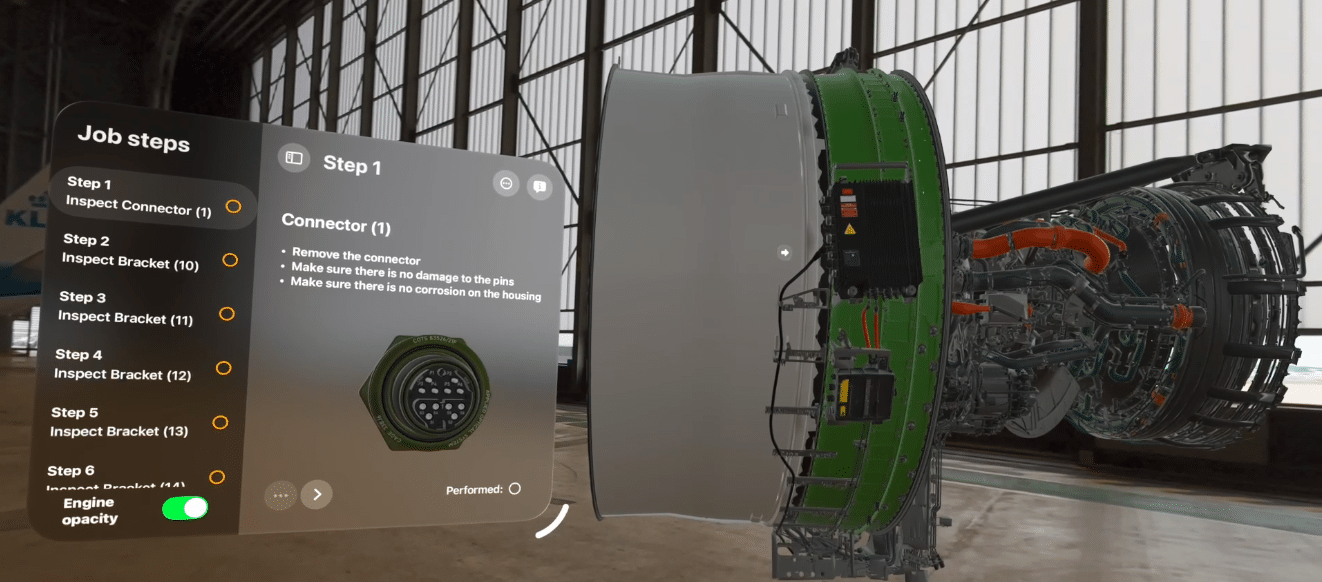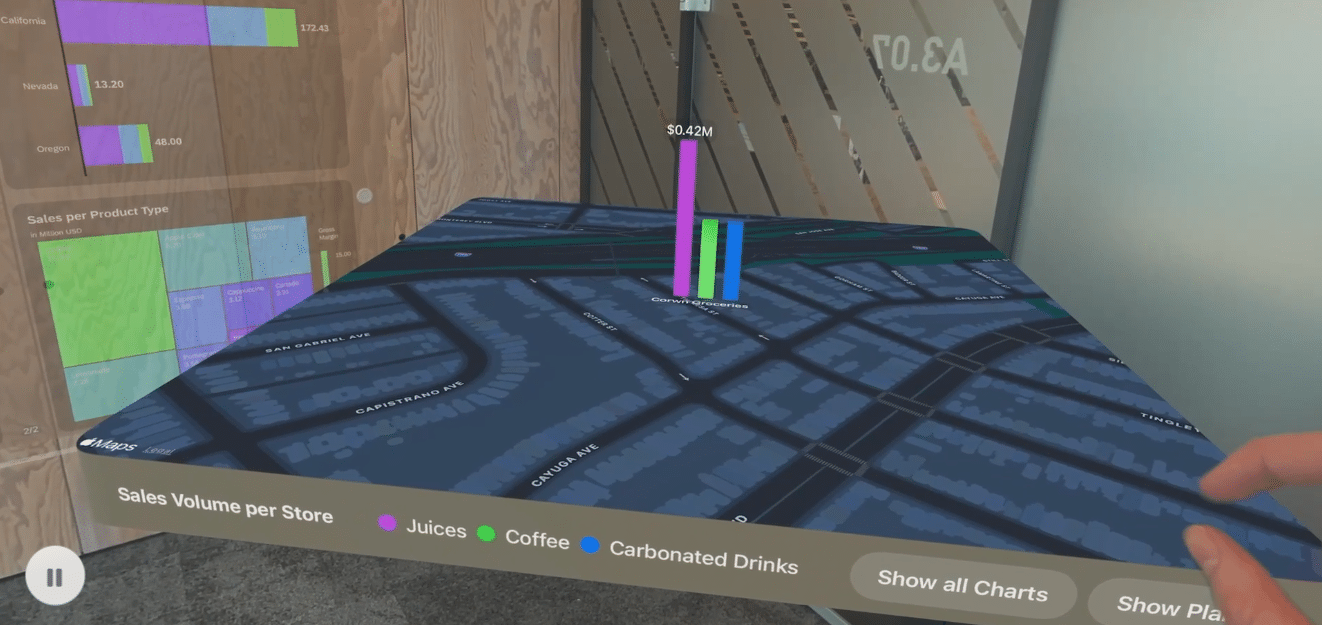Apple’s Vision Pro headset has been making waves since its launch, particularly in the enterprise sector. Priced at $3,500, this spatial computing device may seem like a luxury for consumers, but its potential in business applications is significant.
During demonstrations of the Vision Pro, various enterprise applications showcased the device’s capabilities. From SAP Analytics Cloud providing immersive data visualization to Resolve facilitating building design reviews, the headset offers practical solutions for businesses across different sectors.

Apple’s Vision Pro supercharges design reviews, data exploration, and employee training
Apple has a history of successfully integrating its consumer products into the business environment, with devices like the iPhone and MacBook becoming staples in offices worldwide. With the Vision Pro, Apple is aiming to replicate this success in the AR/VR space, targeting large enterprises as potential customers.
“There’s tremendous opportunity for businesses to reimagine what’s possible using Apple Vision Pro at work,” said Susan Prescott, Apple’s vice president of Worldwide Developer Relations and Enterprise Marketing. “We’re thrilled to see the innovative ways organizations are already using Apple Vision Pro, from planning fire response operations to iterating on the most intricate details of an engine design — and this is just the beginning. Combined with enterprise-grade capabilities like mobile device management built into visionOS, we believe spatial computing has the potential to revolutionize industries around the world.”
Healthcare applications like Complete HeartX demonstrate how the Vision Pro can aid in training healthcare workers by providing detailed 3D models and simulations. Similarly, companies like KLM Royal Dutch Airlines are leveraging the headset for technician training, saving costs and minimizing downtime.
“We see Apple Vision Pro as a tremendous value-add that will improve our fleet availability and operations,” said Bob Tulleken, KLM’s vice president of Operations Decision Support. “Training our employees with spatial computing will lead to fewer costly errors because the most current information they need to do their job is there in front of them as they perform the task. This means we not only get vastly more efficient in our work, but also provide a better work environment for our employees to succeed.”

Apple has strategically partnered with key players like Microsoft, SAP, and Porsche to optimize their platforms for the Vision Pro. Microsoft’s suite of productivity apps, including Microsoft 365 and Teams, offer seamless integration with the headset, enhancing collaboration and productivity in the workplace.
“Spatial computing has enabled us to rethink how professionals can be productive and work intelligently with the power of AI,” said Nicole Herskowitz, vice president, Microsoft 365 and Teams. “With Microsoft 365 and Teams on Apple Vision Pro, your office moves with you, allowing users to view apps side by side on an infinite canvas with spatial computing for incredible multitasking and collaboration.”
SAP Analytics Cloud and SAP Mobile Start provide powerful data analytics tools tailored for the Vision Pro, enabling users to visualize complex datasets in immersive 3D environments. Porsche’s Race Engineer app exemplifies how real-time data visualization on the Vision Pro can revolutionize industries like automotive engineering.

While the Vision Pro holds immense potential for businesses, challenges such as mass deployment and dueability in harsh environments remain. However, Apple’s commitment to providing developer support through initiatives like the Enterprise Spatial Design Lab and partnerships with companies like Deloitte indicates a proactive approach to addressing these challenges.
Read more: